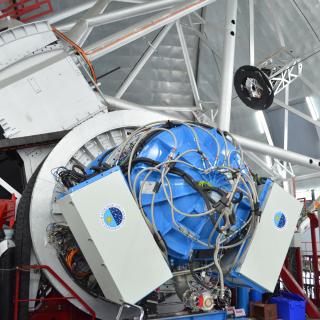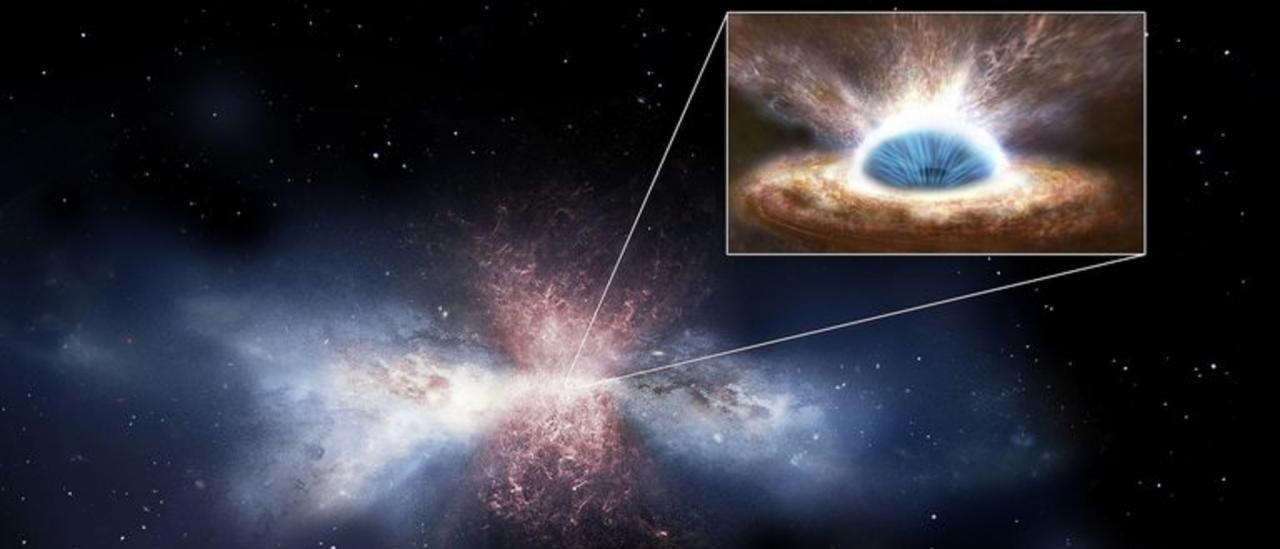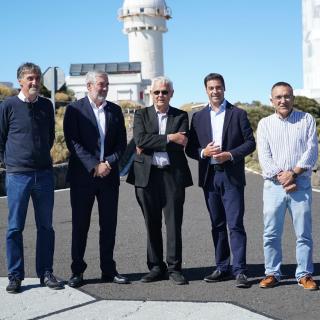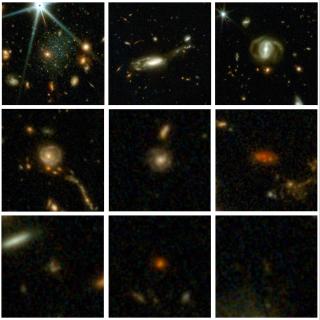The supermassive black holes in the centres of many galaxies seem to have a basic influence on their evolution. This happens during a phase in which the black hole is consuming the material of the galaxy in which it resides at a very high rate, growing in mass as it does so. During this phase we say that the galaxy has an active nucleus (AGN, for active galactic nucleus).
The effect that this activity has on the host galaxy is known as AGN feedback, and one of its properties are galactic winds: this is gas from the centre of the galaxy being driven out by the energy released by the active nucleus. These winds can reach velocities of up to thousands of kilometres per second, and in the most energetic AGNs, for example the quasars, which can clean out the centres of the galaxies impeding the formation of new stars. It has been shown that the evolution of the star formation over cosmological timescales cannot be explained without the existence of a regulating mechanism.
To study these winds in quasars the EMIR infrared spectrograph on the Gran Telescopio Canarias (GTC) was used. EMIR is an instrument developed completely in the Instituto de Astrofísica de Canarias, which is designed to study the coolest and most distant objects in the universe by analysing infrared light. Since June 2016 this has been installed at a focus of the GTC, after going through an exhaustive test phase in the workshops of the Instrument Division of the IAC headquarters in La Laguna.
The data obtained since then has been used to produce several scientific articles of which the latest is a study of the obscured quasar J1509+0434, published today in the journal Monthly Notices of the Royal Astronomical Society Letters and produced by an international team led by IAC researcher Cristina Ramos Almeida. This quasar is in the local universe, and is an analogue of the more distant and far more numerous quasars in which AGN feedback must be affecting in a major way the formation of new stars.
“EMIR has allowed us to study the winds of ionized and molecular gas from this quasar by using the infrared range. This analysis is very important because they don’t always show similar properties, which tells us a great deal about how these winds are produced and how they affect their host galaxies”, explains Ramos Almeida. The study of this and other local quasars will allow us to understand what was happening in galaxies when they were younger and when they were forming their structures which we see today.
Based on the new data obtained with EMIR, the team has discovered that the ionized wind is faster than the molecular wind, reaching velocities of up to 1,200 km/s. However it would be the molecular wind which is emptying the gas reservoirs of the galaxy (up to 176 solar masses per year). “New observations with ALMA will let us confirm this estimate”, explained José Acosta Pulido, a researcher at the IAC and co-author of this study.
The next step is to observe a complete sample of obscured nearby quasars with EMIR to study their ionized and molecular winds. We also want to investigate the stellar populations of their host galaxies. This will allow us to confirm directly the effect of AGN feedback on the evolution of the galaxies.
Scientific article: C. Ramos Almeida, J. A. Acosta-Pulido, C. N. Tadhunter, C. González-Fernández, C. Cicone, M. Fernández-Torreiro. A near-infrared study of the multi-phase outflow in the type-2 quasar J1509+0434. Monthly Notices of the Royal Astronomical Society: Letters, Volume 487, Issue 1, June 2019, Pages L18–L23, https://doi.org/10.1093/mnrasl/slz072
Contact at the IAC:
Cristina Ramos Almeida (cra [at] iac.es (cra[at]iac[dot]es))
José Antonio Acosta Pulido (jap [at] iac.es (jap[at]iac[dot]es))




